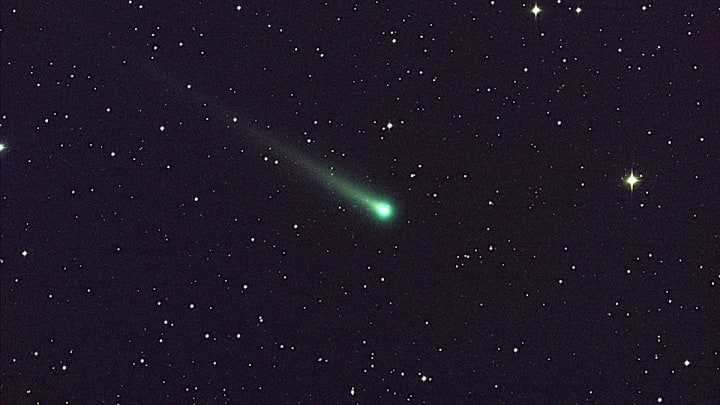In March 2022, NASA astronomers at San Diego’s Zwicky Transient Facility spotted a previously undiscovered green comet orbiting Jupiter. They named it C/2022 E3 (ZTF).
Not only has the comet gotten brighter since then, but it’s also exited Jupiter’s territory and entered ours. This month, as ABC News reports, you can even catch a glimpse of it—here’s how.
How to See the Green Comet
The comet, heading northwest, just passed its perihelion—its closest point to the sun—on January 12, and it will reach its closest point to Earth on February 2.
For the duration of January, skygazers in the Northern Hemisphere should be able to see it in the early morning with the aid of a telescope or binoculars. You might be able to make it out with your naked eye “under dark skies,” according to NASA’s Jet Propulsion Laboratory, but as “comets are notoriously unpredictable,” there’s no guarantee. The sky should be especially dark during the new moon phase on January 21, so that’s not a bad day to scan the skies for a greenish blur. People in the Southern Hemisphere will get a chance to see C/2022 E3 (ZTF) beginning in early February.
This particular comet’s history is shrouded in mystery, but we know it doesn’t visit us often—if, in fact, it ever has. “If C/2022 E3 has ever passed through the solar system before, it would have last been seen in the sky more than 10,000 years ago,” Jon Giorgini, a senior analyst at NASA’s Jet Propulsion Laboratory, told NPR.
What Makes the Comet Green
The comet’s nucleus is surrounded by a cloud of gas and dust called the coma. As the comet travels closer and closer to the sun, radiation causes energy fluctuations in some of those gases. This process can cause two of them—cyanogen and diatomic carbon—to appear green to us.
[h/t ABC News]
